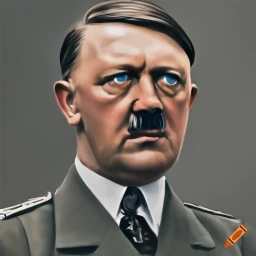To understand Adolf Hitler’s strategies, one must delve into the annals of history and examine the socio-political climate of the time. Hitler, a man who rose from obscurity to become one of the most infamous figures in world history, was a master strategist and orator. His strategies were a blend of political manoeuvring, propaganda, and military tactics.
Hitler’s rise to power was marked by a series of strategic moves. He capitalised on the economic turmoil and discontentment in post-World War I Germany to gain popularity. His speeches were filled with nationalistic fervour, promising to restore Germany’s lost glory. He used propaganda effectively to manipulate public opinion and consolidate his power.
One of Hitler’s most significant political strategies was the Enabling Act of 1933. This act effectively gave Hitler dictatorial powers, allowing him to bypass the Reichstag (German Parliament) and enact laws without its consent. This move was instrumental in establishing his totalitarian regime.
In terms of military strategy, Hitler adopted a policy known as Blitzkrieg or ‘lightning war’. This involved rapid, concentrated attacks intended to break through enemy lines before they had time to respond effectively. The strategy was used with devastating effect in the early stages of World War II.
One of Hitler’s greatest military successes was the invasion of Poland in 1939. The Blitzkrieg tactics employed by the German forces led to a swift victory, marking the beginning of World War II. Another notable success was the Fall of France in 1940. Despite having one of the largest armies in Europe, France fell to German forces within six weeks.
However, Hitler’s strategies were not infallible and led to several significant defeats as well. The Battle of Stalingrad (1942-1943) is often considered as one of Hitler’s greatest failures. Despite initial successes, German forces were eventually encircled and defeated by the Soviet Red Army. This marked a turning point in World War II, with the momentum shifting towards the Allies.
Another notable failure was the invasion of the Soviet Union, codenamed Operation Barbarossa. Hitler underestimated the logistical challenges and the resilience of the Soviet forces. The harsh winter and fierce Soviet resistance led to heavy losses for the German forces.
In conclusion, Hitler’s strategies were a mix of political manipulation, propaganda, and military tactics. His successes were largely due to his ability to capitalise on the socio-political climate of the time and his effective use of Blitzkrieg tactics. However, his underestimation of enemy forces and overreliance on aggressive military tactics led to significant defeats.
The lessons from Hitler’s strategies are manifold. They underscore the importance of understanding one’s adversaries, adapting to changing circumstances, and not underestimating the power of public opinion. However, they also serve as a stark reminder of how power can be misused when concentrated in the hands of a single individual.
It is crucial to remember that while we can analyse Hitler’s strategies from a historical perspective, we must never forget the immense human suffering that resulted from his actions. His reign was marked by widespread atrocities and genocide, which should serve as a warning against totalitarian regimes and ideologies based on hate and discrimination.
